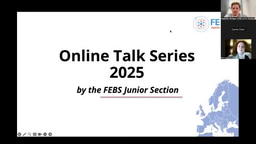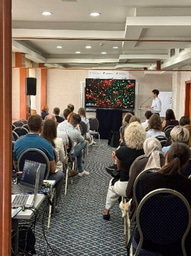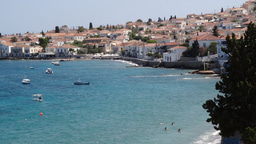FEBS Excellence Awardee spotlight: Carina Soares-Cunha

Carina Soares-Cunha is an Assistant Researcher at the ICVS – University of Minho in Portugal. She did her PhD studies on the involvement of the nucleus accumbens in rewarded and motivated behaviors at the University of Minho. She then moved to the USA in 2019 for a postdoc at the Zuckerman Institute (Columbia University), where she researched the neuronal coding of self-paced motivated behaviors. In 2021, she established her independent research group at the ICVS, focusing her research on the neuronal encoding of associative learning. In 2022, Carina was honored with a FEBS Excellence Award (funds for equipment/consumables for early-career group leaders).
What is your current research focus?
I currently focus my research on understanding how the brain encodes sensory signals to produce appropriate associative learning. I am particularly interested in the identification of the genetic identity of neurons of the nucleus accumbens (the brain region working as a limbic–motor interface) that encode associations between a stimulus and a positive outcome or neurons that encode associations between a stimulus and a negative outcome. I am using animal models coupled with a multidisciplinary approach with cutting-edge technology that includes single-cell RNA sequencing, calcium imaging with miniaturized microscopes, and optogenetics to dissect with detail the genetics and functional chronology of associative learning.
What’s exciting in this field at the moment?
Until very recently, the belief in the research field was that neurons within the nucleus accumbens encoded positive or negative associative learning in a highly dichotomous fashion, with those expressing dopamine receptor D1 only being involved in reward encoding and those expressing D2 receptor being involved in aversion encoding. However, we were one of the first few teams that showed that this is in fact not the case, challenging the classical view on striatal function. This has opened new and exciting questions on how nucleus accumbens neurons can decode such complex signals and if there are genetic determinants of positive and negative encoding in this brain region. These are the questions that we are actively trying to answer!
Looking back at your career trajectory, what would you pick out as high or low points?
During my still somewhat brief career I would have to point to the moment when I was awarded with a PhD grant as my high point, simply because that marked the first step to becoming a neuroscientist!
Although I cannot pinpoint a specific low moment in my career, I have to say that every rejected grant, award or manuscript always brings a feeling of failure. This is something that we, as scientists, must learn to deal with, overcome and just keep trying!
How has time spent doing research abroad influenced your scientific career?
I had the opportunity to go abroad for a postdoc, to Rui Costa’s Lab at the Zuckerman Institute (Columbia University, USA), which was an incredibly enriching experience. During my stay there, I learned key techniques that I was able to implement in my own lab and that my team is now using daily. In addition to the technical aspect, I had the opportunity to contact with and learn from highly prestigious neuroscientists, including several Nobel prize laureates. Apart from the scientific experience, I was also immersed in a multicultural environment, which greatly contributed to my personal growth.
How have you found being a group leader?
I find being a group leader very gratifying. I am lucky enough to do every day what I love the most, which is to do neuroscience research, and at the same time contribute to the growth and development of future generations of scientists, by supervising students. I try to give students the freedom, from very early on, to develop their own scientific thinking, by encouraging them to write their projects and design their experiments, and providing an environment of collaboration between students and postdocs. In addition, I also actively seek external collaborations with experts in the field, so that I can further discuss results and experiments and so that my students can receive constructive feedback from other experts in the field.
What would be one wish to improve the bioscience research landscape?
I believe that the improvement of bioscience research is only dependent on highly motivated and capable researchers. Thus, it is imperative that more stable and well-defined career paths and opportunities are created for young scientists. In addition, it is also important to change academic culture to foster collaboration, multidisciplinary and multicultural team science.
Top image of post: mouse ventral pallidal neurons infected with an AAV carrying GCaMP6f expression; image by the lab of Carina Soares-Cunha.





Join the FEBS Network today
Joining the FEBS Network’s molecular life sciences community enables you to access special content on the site, present your profile, 'follow' contributors, 'comment' on and 'like' content, post your own content, and set up a tailored email digest for updates.